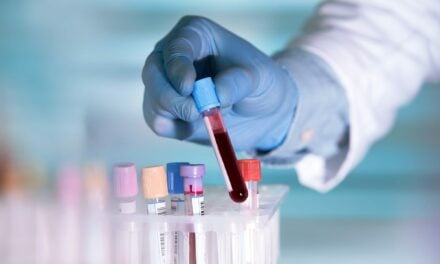Artificial intelligence (AI), deep learning (DL), and machine learning (ML) tools are being applied to address the challenges of cancer biomarker discovery and diagnosis, where the analysis of vast amounts of imaging and molecular data is beyond the ability of traditional statistical analyses and tools.
In an issue of Cancer Biomarkers, researchers propose various approaches and explore some of the unique challenges of using AI, DL, and ML to improve the accuracy and predictive power of biomarkers for cancer and other diseases.
“The biomarker field is blessed with a plethora of imaging and molecular-based data, and at the same time, plagued with so much data that no one individual can comprehend it all,” says guest editor Karin Rodland, PhD, Pacific Northwest National Laboratory, Richland; and Oregon Health and Science University, Portland, OR, USA. “AI offers a solution to that problem, and it has the potential to uncover novel interactions that more accurately reflect the biology of cancer and other diseases.”
Promising applications of AI, DL, and ML presented in this issue include identifying early-stage cancers, inferring the site of the specific cancer, aiding in the assignment of appropriate therapeutic options for each patient, characterizing the tumor microenvironment, and predicting the response to immunotherapy.
A comprehensive overview of the literature regarding the use of AI approaches to identify biomarkers for ovarian and pancreatic cancer illustrates underlying principles and looks at the gaps and challenges that face the field as a whole. Ovarian and pancreatic cancers are rare, but lethal because they lack early symptoms and detection.
Lead investigator Juergen A. Klenk, PhD, Biomedical Data Science Lab, Deloitte Consulting, Arlington, VA, USA, and colleagues describe studies using AI and ML to analyze images for the early detection of disease, and models that can be built to predict likely outcomes for the patient. Some of the challenges, such as the difficulty of gathering large enough datasets, are discussed.
“Algorithms develop biases and produce prejudiced responses when the data they are trained on are non-representative or incomplete,” says Klenk. The investigators suggest that the development of larger and more diverse image databases for rare cancers across institutions, standardized reporting methods, and easier-to-understand interfaces that increase user trust are needed to make a true impact on biomarker discovery.
Papers in the special issue focused on the development of new computational tools to facilitate the application of AI to biomarker identification; the use of whole cell imaging and immunofluorescence to identify immune features in pancreatic tumors to provide prognostic information; the use of microRNAs and applied machine learning to identify a miRNA profile associated with gastrointestinal stromal tumors; and the use of hierarchical clustering of combined multi-omic datasets to identify an antitumor immune signature in patients with colon cancer.
“There is a continuing urgent need for more effective strategies for improving the early detection of cancers. Cutting-edge AI systems have been shown to improve sensitivity and specificity in the interpretation of both imaging and non-imaging data for breast, lung, prostate, and cervical cancers,” says Rodland.





